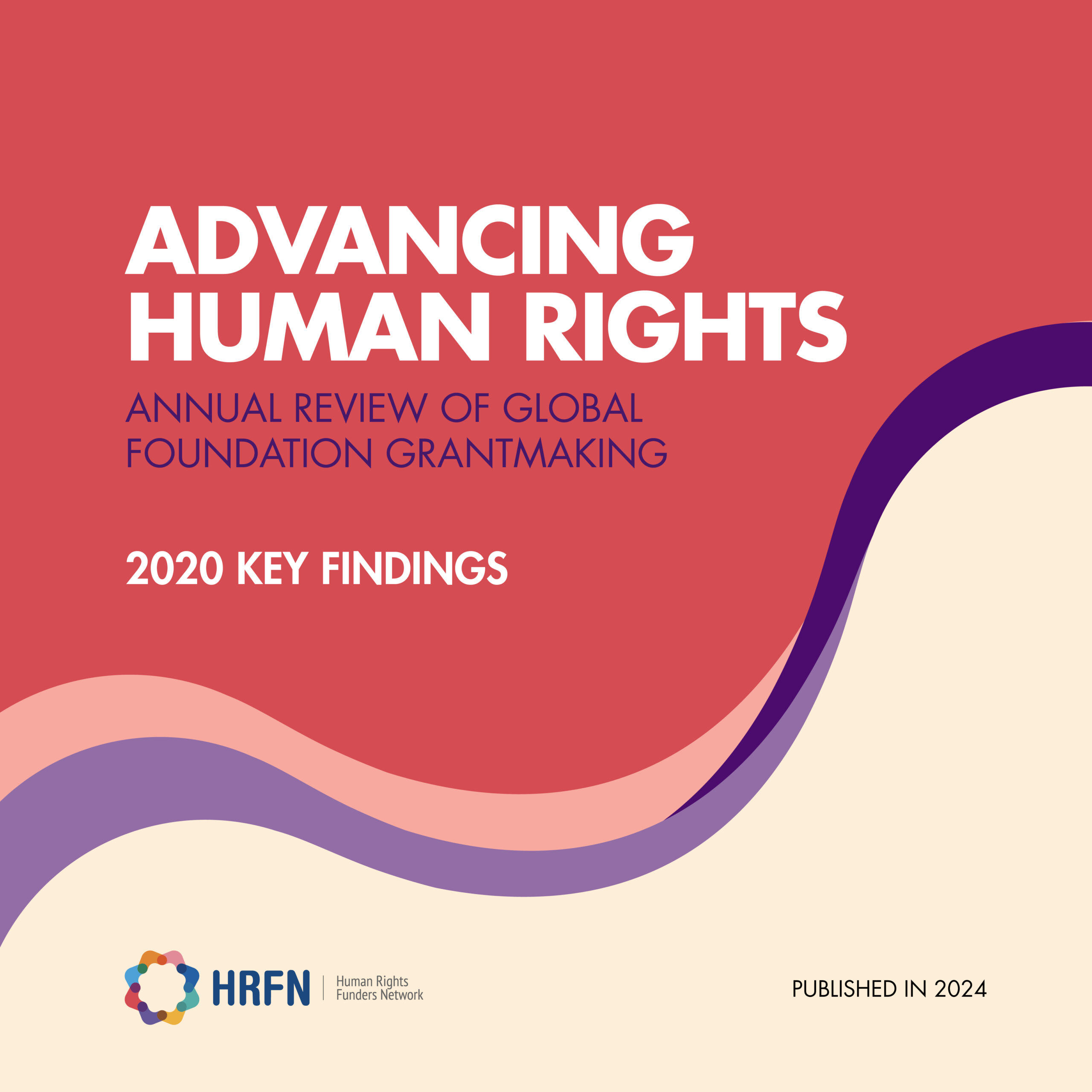- At least 40% of foundation support for human rights work in Latin America goes to organizations outside of Latin America
It is not breaking news that a large share of foundations’ human rights funding goes to either intermediaries or organizations based in Canada, the United States, or Western Europe. Over 800 foundations made grants in 2018 to support human rights work around the world. Of the total $3.7 billion in grant dollars, only 6% was allotted to human rights work in Latin America, and 60% of that funding went directly to organizations based in that region[1]. The source for this data is Advancing Human Rights, a multi-year research initiative led by Human Rights Funders Network (HRFN) and Candid.
I found two things in this data especially worth highlighting:
- The share of funding going to local organizations is diminishing rather than increasing.
- In 2017, 65% of the total funding for human rights work in Latin America ($220 million) was granted to organizations based in Latin America[2].
- In 2018, only 60% of the Latin American total ($214.5 million) went to those organizations
- Project-specific support predominates.
- The same research by HRFN and Candid shows that funders provide mostly restricted funding, especially to organizations in the global South: only 20% of all grants to organizations based in Latin America were unrestricted[3].
- In sum, inequality in accessing funding occurs not only in terms of the share of total funds received by organizations in Latin America but also in the quality of support.
- Local nonprofits must regularly compete for funding with international organizations and the private sector
A less documented but equally important hurdle for local organizations is that they must face competition not only from non-local (aka international) nonprofit organizations but also from private entities. A study commissioned by CIVICUS found that, out of 6,500 calls for proposals, Latin American nonprofit organizations faced private companies as competitors in 71% of these proposals, and international organizations in 74%[4]. Only 3% of calls for proposals were issued exclusively for organizations in Latin America. Each call for proposals tests local organizations’ capacity due to high competition under unequal conditions, with their chances of being awarded projects decreasing every time a large pool of private businesses enters the picture.
- Legal and policy frameworks in Latin America place local organizations at a disadvantage
The national tax regimes affecting nonprofits in Latin America are widely different. Even setting authoritarian regimes aside, most of the region’s population lives in countries with somewhat restrictive legal environments for nonprofit organizations, including Argentina, Brazil, Mexico, and Peru[5]. These countries have highly bureaucratic administrative systems that render organizations vulnerable to criminalization and tie up their strained resources. A handful of foundations are proactively supporting advocacy work to counter increasingly encroaching measures. These foundations cleverly realize that without directly supporting organizations to hold the line in the region, there is little hope that the rest of their programming will advance.
- Weak interest from national philanthropic entities in initiatives that challenge the status quo.
At least 65% of resources available to civil society organizations in Latin America come from the global North[6], and this percentage is potentially higher for human rights organizations. . Though there are many local corporate foundations in the region, they are usually focused on “safe” or “nonpolitical” causes. A 2008 study that summarized attitudes and priorities by corporate philanthropy in Mexico[7] showed that “human rights” occupied position #17 among a list of 19 issues that received the most funding in a sample of 90 Mexican corporations. The top three issues were “education”, “the environment” and “children”.Local family foundations and corporate foundations with headquarters in the region generally steer away from initiatives that seek changes to the existing socioeconomic and justice systems. For example, Coca Cola Foundation enthusiastically supports increasing access to drinking water for “last mile” communities in Ecuador, Dominican Republic, and Colombia, but does not have a history of supporting litigation and advocacy on behalf of women incarcerated after having abortions or collective work by journalists and civil society groups in Nicaragua.
Changing Donors’ Practices to Knock Down Barriers to Accessing Funding
While reviewing the data, I discovered that three out of the four types of barriers I mention have their origin in the philanthropic system itself. This means that donors have the ability to dismantle them.
The first time I heard local philanthropy was having “a moment” in the region was at a panel discussion in the 11 Trends in Philanthropy in Latin America webinar back in May. Amalia Souza, founder of Fundo Casa Socioambiental in Brazil, pointed out that the philanthropic sector in our countries is experiencing unprecedented growth, and that local elite families and business people creating new foundations are, unfortunately and unsurprisingly, mostly reproducing models from the global North.
Those of us in philanthropy can and should improve grantmaking practices, particularly ensure that funding reaches Latin American groups directly as they are best placed to understand the context, the risks, and the needs of their stakeholders.
Donors invested in the region must recognize that they have the power not only to address the barriers resulting from their own grantmaking practices, but given the deteriorating democratic systems, they have an opportunity to encourage their peers in Latin American family and corporate foundations to support “change-seeking” work.
For people interested in digging deeper into the data, I recommend the following:
- Alternativas y Capacidades, A.C.
- Human Rights Funders Network-Candid
- Innpactia-CIVICUS
- UBS-Harvard University’s John F. Kennedy School of Government



